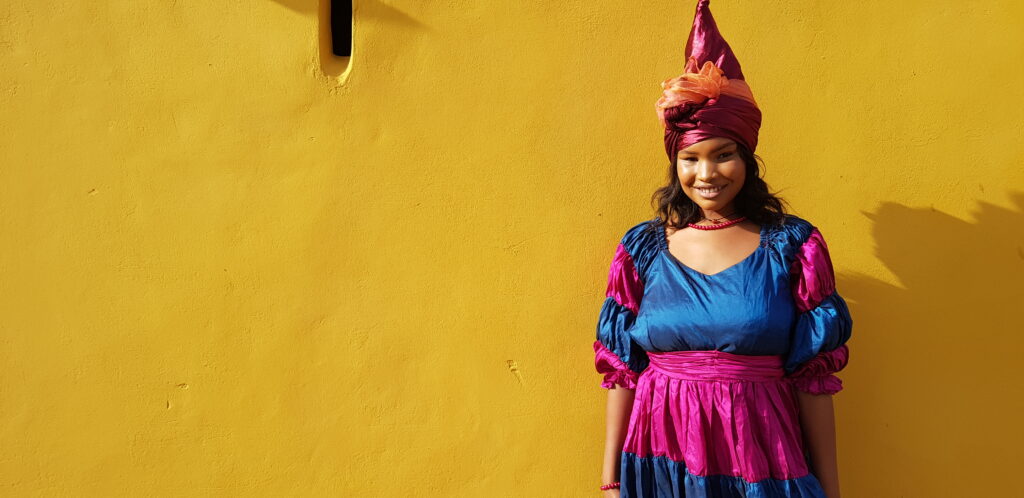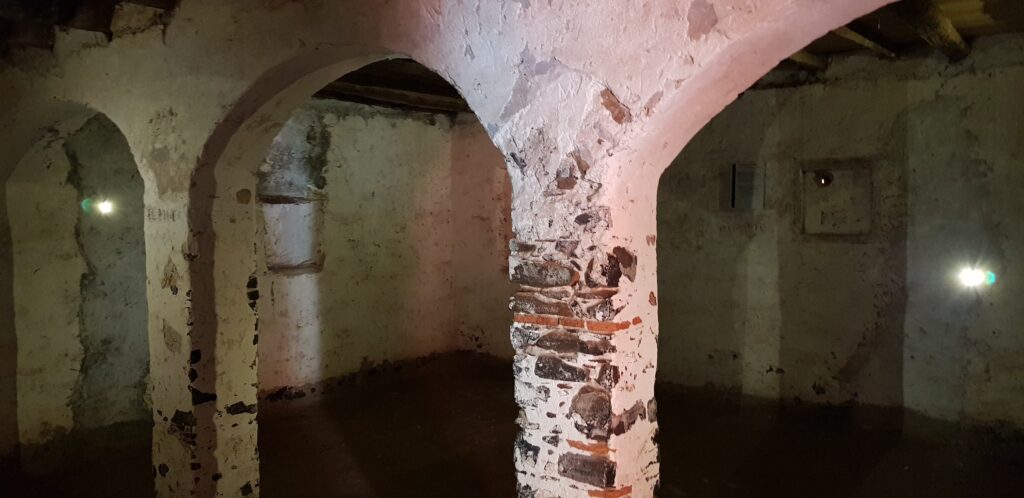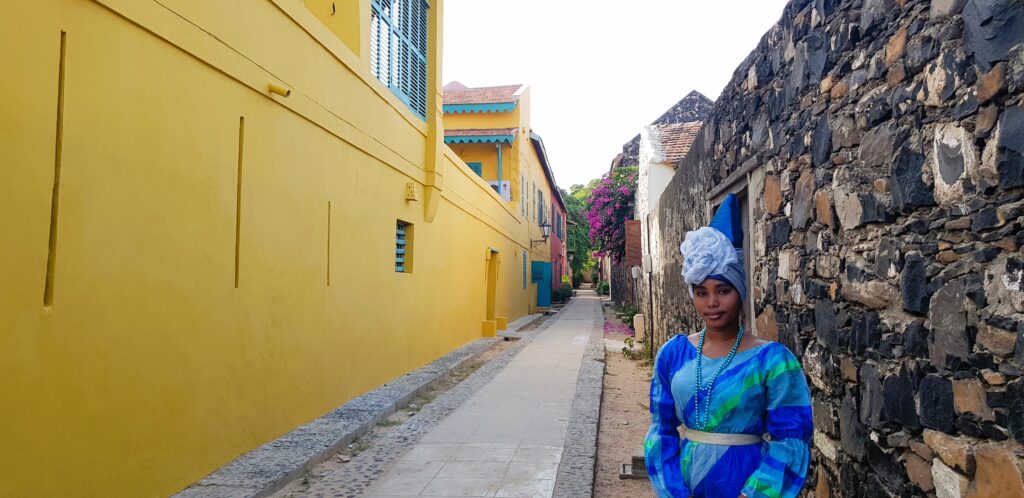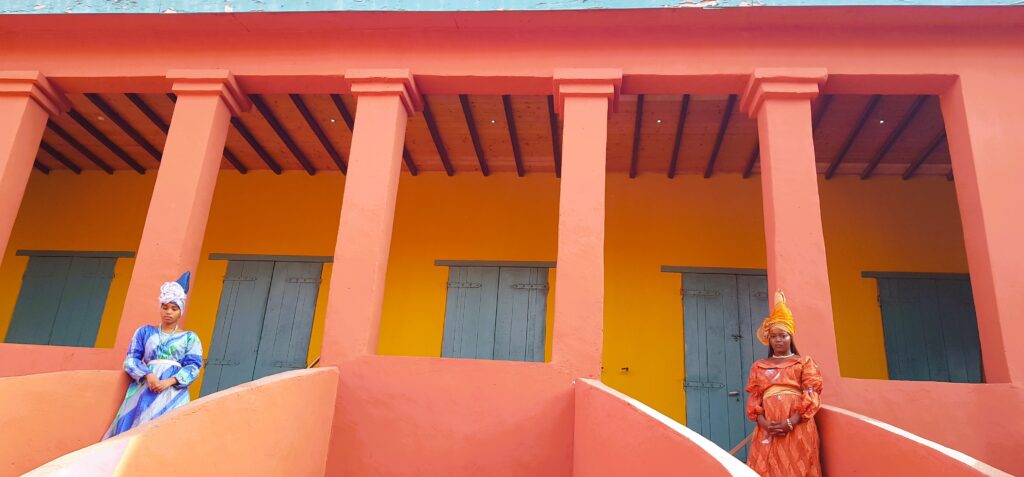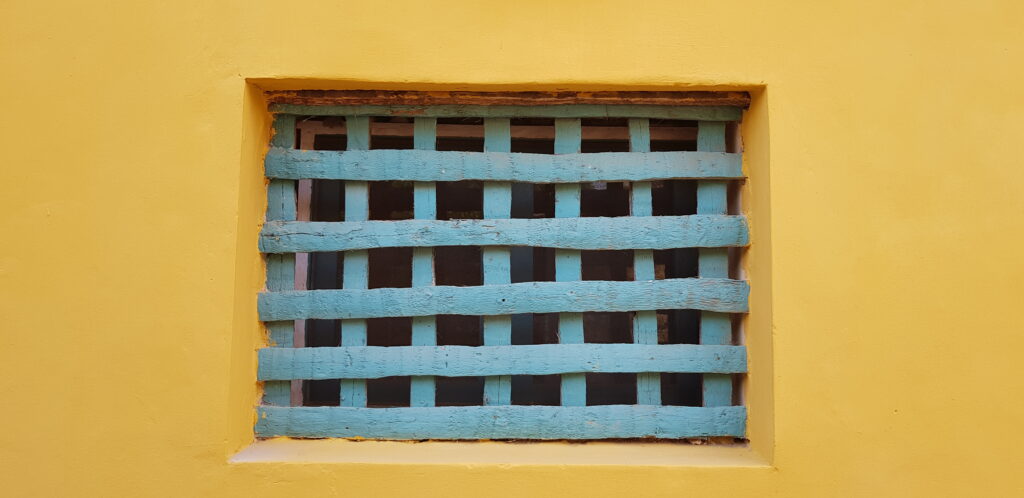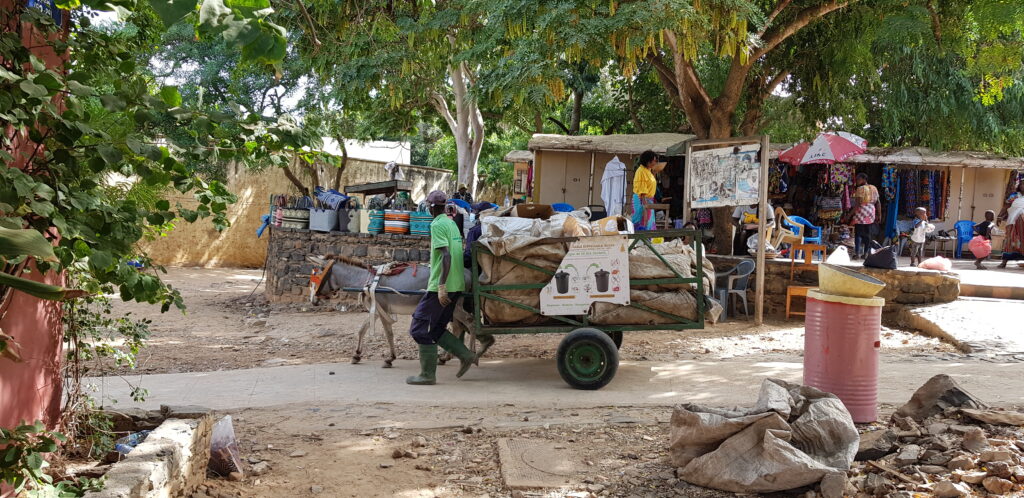All around me was dark. I think it has been kept that way – midday outside but a kind of gloaming inside – probably the closest a visitor can be made to feel what went on in these narrow corridors and dungeons. The wall plaster is peeling in most places and remains of corroded iron hooks from where chains were once clamped can be seen. Lanterns hung from low ceilings looking like cages purpose-built to make even light struggle to do its work.
An array of narrow chambers into which slaves were packed like sardines; one, for example, eight feet by eight feet, which reportedly held 20 full-grown adults. A shackled, ulotrichous man in a hessian loincloth looks wide-eyed, amused, unable to fathom what was happening to him. The defiant and the hellion had a different quarter, a ledge, rather, where one could barely crawl into. Just above this rather uncomfortable state of affairs was a wholly different world: bay windows, polished wooden floors, luxurious bedrooms and balconies where gentle sea breeze wafted over – the dwellings of the slave traders. If sinister was architecture, this would have been a marvel – the La Maison des Esclaves, or the House of Slaves.
‘The door of no return’ literally shines like light at the end of the tunnel. A portrait in stillness, symbolising surrender. A warm lick of salty wind caresses you, trying to convince that you made the right decision by walking through it. The solace in damnation when you are walking out of hell.
The Goree Island is a liminal space, the magnitude of which strikes you soon as you set your feet on this place, a barren volcanic rock of around 30 hectares, 3.5 km off the coast from Dakar. I was in Senegal, attending one of the many events hosted by African countries each year positioning them as places with great potential for aviation and growth. Which there is, when you consider the desire for change with the largest youth demographic, minerals and resources, and nowadays, the increasingly ubiquitous political will. A visit to this dark chapter in history seemed only relevant – bringing us closer to a continent poised for greater things successfully tiding over the moorings of a dismal past. In tenacity there is credibility.
The open-decked two-tiered boat bunted its way across the shimmering grey Atlantic, passing by several smaller fishing and larger vessels ferrying oil and natural gas. I struck up a conversation with the skipper, a resident of the island, who kept a stern eye over passengers venturing too close to the bow. What first appeared as a dark green silhouette soon gave way to a faded, sunstruck, group of buildings, from which jutted out a long pier. The surrounding waters are deep and infested with wreckages of sunken ships, at least a 1,000 of them, I was told. The Smithsonian-funded Slave Wrecks Project has recently begun to fund scuba divers from the region searching for a different, more native narrative.
The Portuguese arrived first, in 1444, violently displacing the island’s indigenous Lebu people. What was till then simply called ‘Ber’ was promptly changed to the mouthful ‘Ila de Palma.’ Nearly a century after their arrival, the Portuguese started the slave business, lucre of which attracted others to this tiny island, each giving it different names. The Dutch called it ‘Good Reed’ and the French, ‘Goree’ meaning ‘good harbour’. Everybody liked it because of the centrality of its geographical position between the North and the South, an excellent strategic position making it a safe haven for anchoring ships. All of them dealt in the trade till it was halted around the middle of the 19th century. By then an estimated one million slaves had passed from this human warehouse, through ‘The door of no return’ to work in the plantations of the New World and the Americas. It remained a French colony till Senegal got its independence in 1960.
Chugging along, conversations tingeing with the salt in the air, the boat captain announced our approach by pointing out an unimposing fort on the island closing in – the jaded, sand-coloured Fort d’Estrees, which holds the House of Slaves. Many famous people have made their way across these waters to the island, he told me. From Mandela, to Obama, Clinton, and the Pope John Paul II. Goree is one of the 200 historical sites of the International Coalition of the Sites of Conscience which connected past struggles to today’s human rights movements. UNESCO declared it a World Heritage Site in 1978, a year before Auschwitz.
Like many grim chapters from history, here too are some dubitable leaves. Historians continue to debate the number of slaves that passed through Goree and its relevance in the Atlantic slave trade. The founding curator of the House of Slaves, Josep Ndiaye, gave it international fame by introducing the witness as character, a testimony performance. Those who run the museum today, the tourism department and other guides, try valiantly to reclaim this legacy – an African emancipation and an international reconciliation project. A significant articulation of Black history visited by hundreds of thousands each year. You have to be callous to an elevated degree or pay no attention and remain unmoved. Some around me were tearing up or knelt down touching the walls or just stood, struck.
I egressed overwhelmed to the bright African sun scorching the courtyard, nodded at the local ladies assembled by the department officials, I believe, to pep up the otherwise sombre air. They stood elegant on the stairway of the circular portico in their ornate wax and bazin traditional boubous and elaborate headgear, moussour. Neither were they the privileged signares who were active in the slave trade nor were they any of the shipped ones – they all held visible mobile phones.
After picking up a couple of sand paintings the artists of Goree are famous for, I went around the island. There is the remnant of a second world war cannon which was fired just once. Inside the cannon, across three bunkers, my newfound artist friend told me people lived.
“It’s dark in there,” he told me. “Just like the House of Slaves.”


